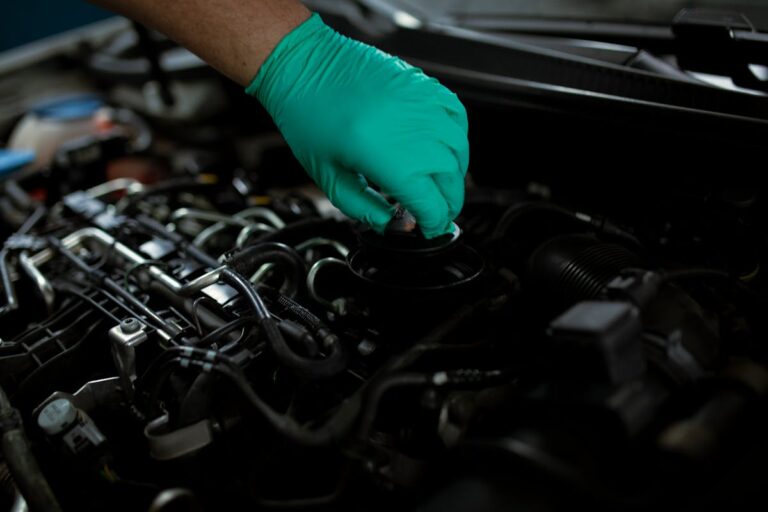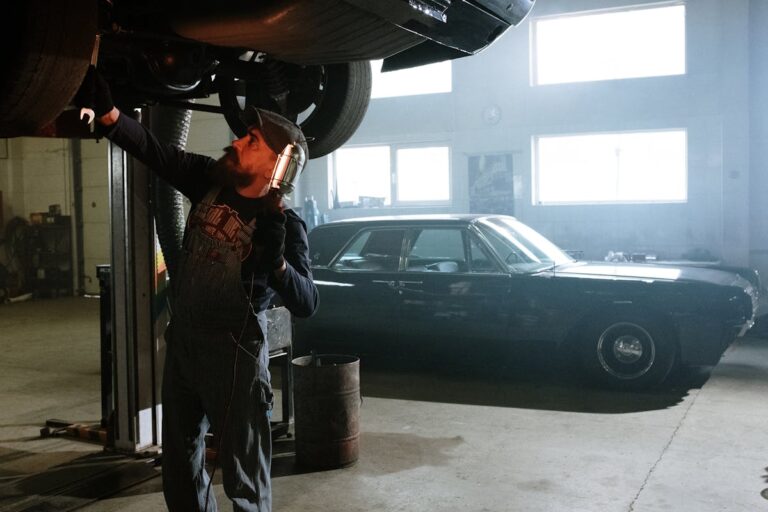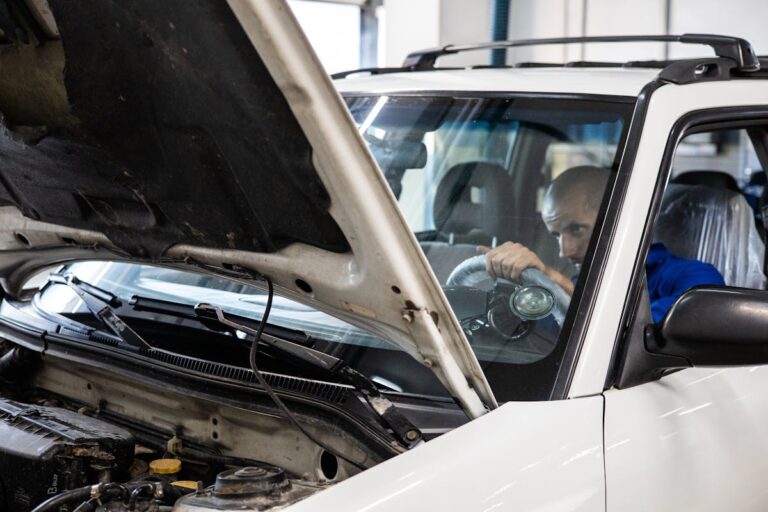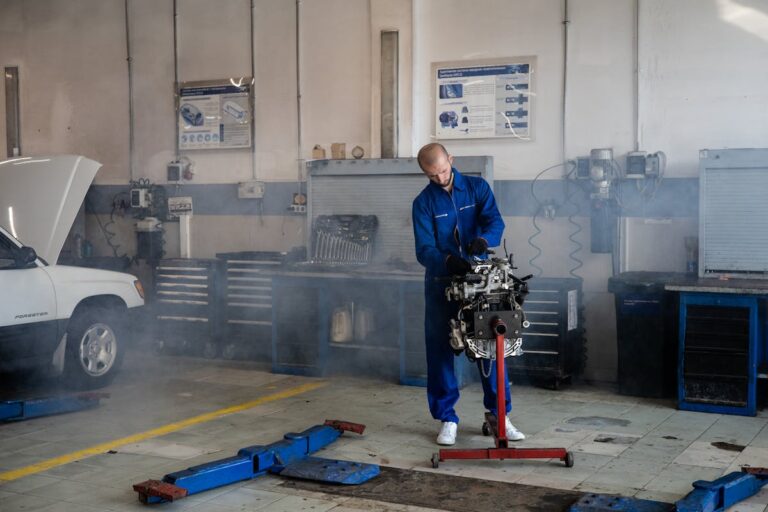In the domain of automobile maintenance, recognizing early signs of transmission problems is imperative, not only for the longevity of the vehicle but also for the safety of its occupants. Symptoms can range from erratic gear shifts and unexplained noises to fluid leaks and vehicle overheating. While these signs may seem minor, they could be indicative of significant issues that require immediate attention, thereby avoiding potentially expensive repairs. As we explore such signs, the question arises: what steps can we take to promptly address these issues?
Unusual Gear Shifting Behavior
Manifesting through jerky movements or sudden changes in vehicle speed, unusual gear shifting behavior often serves as an early warning sign of transmission problems. This irregular activity can stem from various factors, including improper gear engagement or flawed transmission calibration.
Gear engagement is a critical component of the transmission system, facilitating the smooth shift between gears. When this engagement becomes inconsistent or erratic, it can result in unusual shifting behavior. This can create a driving experience that is uneven and unpredictable, potentially compromising vehicle safety.
Transmission calibration, on the other hand, is a finely-tuned process that balances numerous variables to guarantee peak operation. These variables include engine speed, vehicle speed, throttle position, and load conditions, among others. A malfunction in any of these areas can disrupt the calibration, leading to abrupt or irregular gear shifts.
Persistent Transmission Noises
Persistent transmission noises present a significant indicator of potential mechanical issues within a vehicle’s transmission system. Understanding this, the forthcoming discourse will focus on the identification of such noises, the common causes behind these auditory signals, and viable solutions to rectify these noise problems. By gaining this knowledge, one can efficiently diagnose and address the underlying transmission issues, thereby ensuring peak vehicle performance and longevity.
Identifying Transmission Noises
Often, one of the most noticeable signs of a transmission problem is an unusual noise. These noises can vary considerably, ranging from buzzing, humming, or whining sounds, to more aggressive noises such as grinding or clunking. They can be intermittent or persistent, and their severity and frequency often increase with the severity of the transmission issue.
To identify a transmission noise, one must be familiar with the normal sounds of their vehicle. This involves paying close attention to the vehicle’s performance and the sounds it makes during various operations, such as accelerating, shifting gears, or idling.
The use of diagnostic tools can also be instrumental in detecting these noises. These tools can help to pinpoint the exact area within the transmission system producing the noise, thus reducing the margin for error in diagnosis.
Transmission fluid plays a vital role in the operation of the transmission system. If the fluid is low or has degraded, it can lead to increased friction within the transmission components, resulting in unusual noises. As a result, checking the transmission fluid level and quality can be an essential part of identifying transmission noises.
Common Transmission Noise Causes
When a transmission noise persists, it’s typically indicative of a more serious underlying issue. It is essential to initiate an immediate noise diagnosis to prevent further damage. Noise can be generated from various sources within the transmission system.
Transmission fluid plays a pivotal role in the functioning of the transmission system. When the fluid level is low or the fluid is contaminated with dirt, grit, or metal particles, it can cause the transmission to make unusual noises. This is because the fluid is no longer able to adequately lubricate the moving parts, resulting in increased friction, heat, and wear.
Similarly, worn or damaged transmission parts can generate noise. For example, a worn-out bearing, gear, or clutch can produce a grinding or humming noise. Additionally, if the transmission is out of adjustment or the clutch is not releasing properly, it can result in a buzzing or whining noise.
Other potential causes of transmission noise include issues with the torque converter, problems with the transmission’s bands, or a failing input or output shaft. In each of these cases, a distinct noise can be heard, signaling the onset of a transmission problem.
Solutions for Noise Problems
Addressing persistent transmission noises promptly is essential to avoid escalating costs and damage. Noise reduction strategies often involve a combination of mechanical adjustments and part replacements.
One common solution is a muffler upgrade, which can reduce exhaust noise and improve overall vehicle performance. Soundproofing materials can also be installed around the engine compartment to absorb sound, reducing both engine and transmission noise.
Examining the engine mounts is another important step. Worn or broken mounts can cause vibrations that lead to noise, so replacement or adjustment may be necessary. Transmission fluid, too, plays a significant role in minimizing noise. Low or degraded fluid can increase friction and cause rattling noises; as a result, regular fluid checks and changes are recommended.
A thorough mechanical inspection is required to accurately identify the source of the noise. This can reveal issues such as worn gears, loose bolts, or damaged bearings, which can all contribute to transmission noise.
Frequent Gear Slippage
Shifting focus to another essential transmission issue, frequent gear slippage, we will examine this problem in three parts: symptoms, causes, and solutions. The ability to identify the signs of gear slippage can greatly aid in early detection and prevention of further damage. An understanding of its causative factors will also provide insight into potential remedies, thereby enhancing the vehicle’s performance and lifespan.
Recognizing Gear Slippage Symptoms
Despite the robust design of modern transmissions, gear slippage remains a common issue that can signal a serious problem. This condition is characterized by a delay or complete lack of response in the gearbox when the driver attempts to switch gears. It’s essential to recognize gear slippage symptoms promptly, as it can lead to extensive damage if left untreated.
The first indication of gear slippage is usually a noticeable delay in gear engagement. When the driver shifts, the transmission should respond immediately. With gear slippage, however, the vehicle may fail to accelerate as expected, or it may rev excessively before the gear engages. This unexpected delay can be disconcerting and potentially hazardous, especially in traffic.
Another key symptom is inconsistent transmission response. The vehicle may shift smoothly at one moment and then slip gears the next, even with no changes in driving conditions or speed. This unpredictability can make it hard to diagnose gear slippage, as the issue may seem intermittent.
In all cases, any unusual behavior in gear engagement or transmission response should be cause for concern. Recognizing these symptoms early can prevent a minor issue from becoming a major, costly repair.
Causes of Gear Slippage
Several factors can contribute to frequent gear slippage in a vehicle’s transmission system. The primary cause often relates to gear engagement issues, which may stem from worn-out clutches or bands. These critical components, responsible for gear shifting, can lose their grip over time due to continual friction and high temperatures. As a result, they fail to hold gears adequately, leading to a phenomenon known as gear slippage.
Secondly, an inadequate level or the poor condition of transmission fluid can also result in gear slippage. The fluid acts as a lubricant, facilitating smooth gear engagement and minimizing friction between mechanical components. If the fluid level drops below the recommended level, or if it becomes contaminated with debris or oxidized due to heat, its lubricating properties diminish. Consequently, this hampers the smooth movement of gears and clutches, leading to slippage.
Lastly, maladjusted linkage or cable can result in improper gear selection, contributing to gear slippage. The linkage, which connects the gear shift to the transmission, needs to be accurately adjusted for peak performance. If not, it can lead to incorrect gear engagement, causing the gears to slip out of place during operation.
Solutions for Gear Slippage
Addressing the driver’s plight of frequent gear slippage, the first course of action should be a thorough inspection and possible replacement of worn-out components. This could potentially involve replacing the clutch, repairing the torque converter, or adjusting the linkage. These procedures require a high level of technical expertise, and it is highly recommended to seek the services of a qualified mechanic.
The next step in mitigating gear slippage is fluid maintenance. Transmission fluid is designed to provide the necessary lubrication for all the moving parts within the transmission. Over time, this fluid can degrade or become contaminated, leading to decreased performance and, ultimately, gear slippage. Regular fluid maintenance, including checks and changes, is paramount to maintaining ideal transmission function.
Finally, proper gear adjustments can greatly reduce the frequency of gear slippage. This involves adjusting the gears to guarantee they fit together correctly and can transfer power from the engine to the wheels efficiently. This is a delicate process that requires a deep understanding of the vehicle’s transmission system.
Through the careful application of these techniques, drivers can greatly reduce the incidence of gear slippage, enhancing the longevity and performance of their vehicles.
Burning Smell From the Car
If you’ve ever noticed a burning smell coming from your vehicle, it’s important not to ignore it. This burning odor is often a symptom of transmission problems, specifically, an overheating transmission. The transmission system of your vehicle is responsible for transferring engine power to the drive wheels. It operates under high stress conditions and heat.
When the transmission fluid is not adequately cooling and lubricating the transmission, it may overheat. This overheating can lead to the degradation and burning of the transmission fluid, consequently producing a burning smell. Your nose can pick up this odor even from inside the cabin, signifying the severity of the issue.
An overheating transmission can result from various factors such as aggressive driving, towing heavy loads, or a clogged transmission fluid cooler. All these scenarios cause the transmission to work harder, hence generating more heat.
Overheating can drastically shorten the lifespan of your transmission, leading to expensive repairs or replacements if not promptly addressed. As a result, it is essential to immediately investigate any burning smell from your vehicle. A professional diagnostic examination can identify the exact cause of this symptom and formulate a strategy to rectify the situation, preserving the integrity of your transmission system.
The Presence of Transmission Fluid Leaks
Your vehicle’s transmission system is a complex mechanism that relies heavily on transmission fluid for smooth operation. This fluid serves as a lubricant for the gears, reducing friction, and maintaining the transmission’s overall health. The presence of transmission fluid leaks is a clear indication of a malfunctioning transmission system.
Recognizing these leaks is essential to prevent long-term damage. The leak detection methods involve routine visual inspections of your vehicle’s undercarriage for any signs of fluid spillage. The transmission fluid is typically reddish and has a distinct, sweet aroma. Pools of this fluid under your parked vehicle can indicate a potential leak.
Proper fluid maintenance tips can help avert these leaks. Regularly checking the transmission fluid level is important. If the fluid levels are consistently low despite topping up, it may signify a leak. Furthermore, regular servicing of the transmission system, including replacing worn-out gaskets and seals, can prevent leakage.
Unresponsive Vehicle Movement
In the domain of transmission problems, unresponsive vehicle movement stands out as a notable issue. This issue manifests typically as a decline in vehicle acceleration and overall driving performance. It’s a predicament which greatly impairs the driver’s ability to control the car, leading to potential safety risks.
Unresponsive vehicle movement usually originates from a discrepancy within the transmission system. The system is designed to transfer the engine’s power to the wheels, regulating the vehicle acceleration and speed. When it malfunctions, this transfer becomes inefficient, causing delayed or muted responses to the driver’s commands.
Symptoms of unresponsive vehicle movement range from delayed acceleration, where the vehicle takes longer than usual to pick up speed, to the car not moving at all despite the engine running. Inconsistent shifts, abrupt jerks, or the vehicle’s refusal to go into gear are other signs of this problem. The driving performance becomes noticeably sluggish, with the vehicle resisting rather than responding to your commands.
Addressing unresponsive vehicle movement is essential for the safety and efficiency of your vehicle. Early detection and prompt repair can prevent the issue from escalating, saving you from potential accidents and costly replacements.
Check Engine Light Activation
Despite the simplicity of its appearance, the activation of the check engine light can be indicative of a complex problem within your vehicle’s transmission system. It is a critical warning sign and should not be underestimated. The illumination of this light is a response to an anomaly detected by your vehicle’s onboard diagnostic system, which continually monitors the vehicle’s performance.
When the check engine light is activated, diagnostic tools are essential to pinpoint the exact problem. These tools, when connected to your vehicle’s system, read engine codes that provide detailed insights into the underlying issues. Engine codes can range from P0700 to P0799, each corresponding to a specific transmission problem. These codes are standardized across all car manufacturers, ensuring universal interpretation.
The check engine light can indicate a variety of transmission problems, from minor issues like a loose gas cap to major ones such as a malfunctioning transmission control module. It can also indicate a slipping transmission, faulty shift solenoids, or even a worn-out clutch. Consequently, seeing this light should prompt an immediate visit to a professional mechanic for a thorough examination. Ignoring this warning can lead to severe damage, costly repairs, or even complete transmission failure.
Clutch Dragging Symptoms
Are you familiar with the term “clutch dragging”? It is a technical term that refers to a condition where the clutch disc does not fully disengage from the flywheel after the clutch pedal has been depressed. This anomaly is often the result of clutch wear or engagement issues and can lead to serious transmission problems if not addressed promptly.
Clutch dragging is usually detectable by specific symptoms. One common sign is the difficulty in shifting gears, especially from a stationary position. If your vehicle is resistant to going into first gear or reverse from a stop, it’s a strong indicator of a dragging clutch. Another symptom is the grinding noise that occurs when you change gears. This happens because the clutch is still partially engaged with the flywheel, causing friction between the moving parts.
A dragging clutch can also cause the vehicle to move forward or backward slightly even when the clutch pedal is fully depressed. This symptom is a clear indication of engagement issues. Also, excessive clutch wear might lead to clutch dragging. Regular maintenance and timely repairs can prevent this transmission problem and guarantee the longevity of your vehicle’s drivetrain.
Ineffectiveness of the Neutral Gear
While the neutral gear is designed to disengage your vehicle’s engine from the wheels, thereby preventing power transfer, certain complications can render this gear ineffective. This ineffectiveness can result in severe neutral gear issues which can impact the overall performance of your vehicle, and potentially lead to significant damage or even failure of the transmission system.
One of the primary causes of neutral gear ineffectiveness is the deterioration or contamination of transmission fluid. This fluid plays a critical role in maintaining the smooth operation of the transmission system, and any alterations to its quality can result in the neutral gear not functioning as intended.
If the transmission fluid is not maintained at the right level, or if it becomes contaminated with dirt, dust, or other foreign particles, this can cause it to become less effective at lubricating the internal components of the transmission system, including the neutral gear. This can lead to increased friction and heat, causing the neutral gear to become unresponsive or ineffective.
To prevent these issues, regular inspection and maintenance of the transmission fluid should be performed. If any signs of neutral gear ineffectiveness are noticed, immediate professional attention is required to prevent further damage to the vehicle.
Frequently Asked Questions
How Frequently Should I Get My Transmission Serviced?
Transmission maintenance frequency depends on your vehicle’s model and usage. However, recommended service intervals typically range from every 30,000 to 100,000 miles. Always consult your vehicle’s manual or a professional for specific guidance.
Will Transmission Problems Affect My Cars Fuel Efficiency?
Yes, transmission problems can indeed impact your car’s fuel efficiency. Issues such as low transmission fluid can cause increased friction and heat, leading to higher fuel consumption and decreased overall vehicle performance.
Is It Safe to Drive With a Failing Transmission?
Driving with a failing transmission is not safe. Warning signs of transmission failure can include gear slipping, unusual noises or fluid leaks. These indicate serious issues that could lead to accidents or further vehicle damage.
What Are the Costs Involved in Repairing a Transmission Problem?
The cost of repairing a transmission problem varies based on transmission types and selected repair options. Manual transmissions generally cost less to repair than automatic ones, with prices ranging from $500 to $1500 on average.
How Can I Prevent Transmission Problems in My Vehicle?
To prevent transmission problems, regular fluid maintenance is critical. Additionally, adopting prudent driving habits, such as avoiding harsh acceleration and ensuring smooth gear changes, can greatly enhance the longevity of your vehicle’s transmission system.





